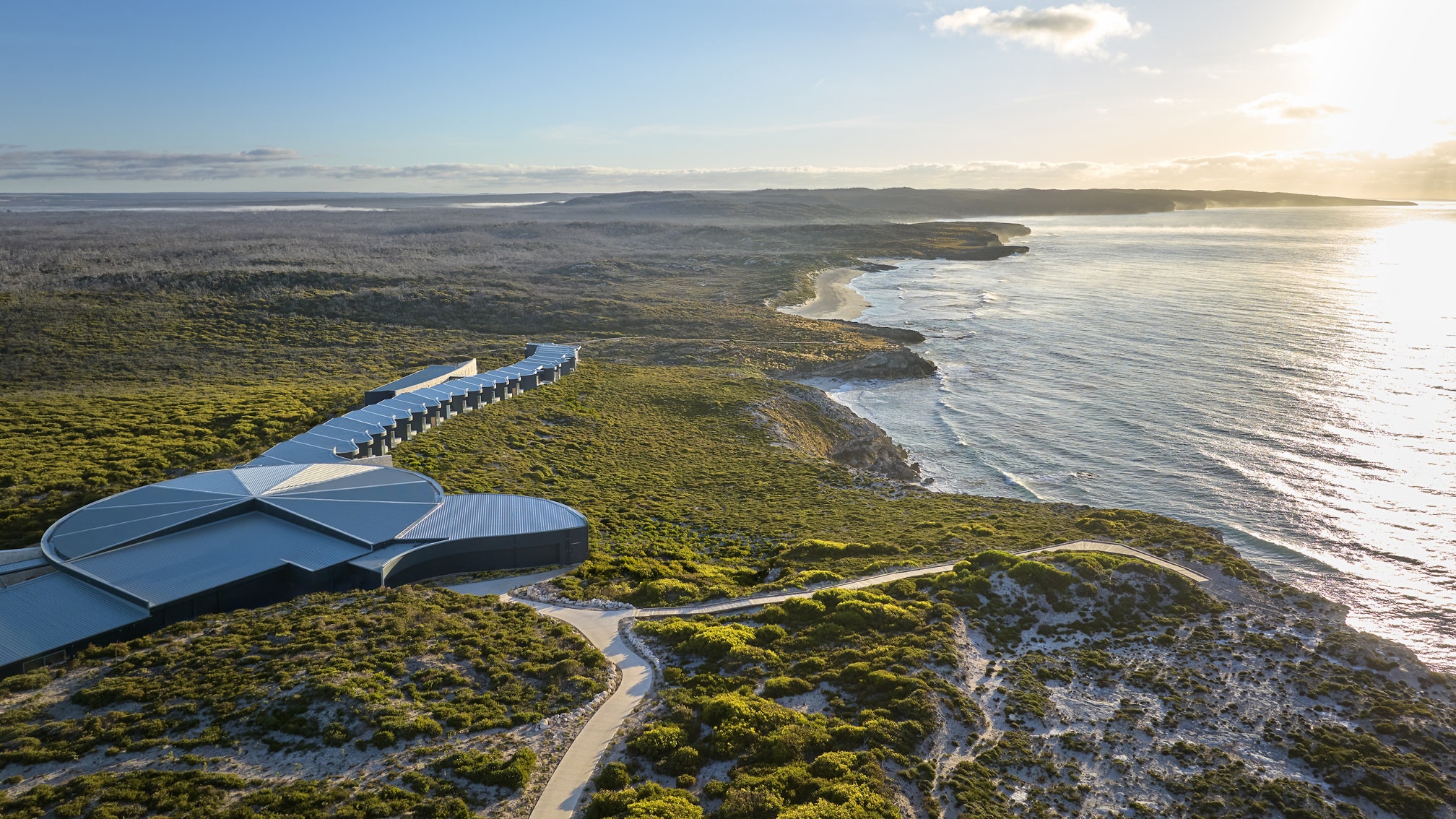I'd never seen the yakka trees on previous trips to Kangaroo Island. But now, clusters of them have shimmied up toward the sky like upside-down palms. Their spearlike trunks, designed by nature to germinate with fire, sprouted recently, a result of the catastrophic 2020 “black summer” bushfires, which engulfed Australia. Fast-moving flames reduced half the island to embers, claiming the lives of thousands of its animals, including more than 60,000 koalas. But the hardy native trees are a symbol of the regenerative power of the bush.
“It's incredible how resilient the Australian landscape is,” says Hayley Baillie, co-owner of Southern Ocean Lodge, which is part of the Luxury Lodges of Australia portfolio and was also burned down. “The fires were devastating, but there are some positives to come out of it.”
Today, the story of death and destruction has been supplanted by one of resilience and renewal. Kangaroo Island, a pendant of primordial land with limestone cliffs and bone-colored beaches in the Southern Ocean off the coast of South Australia, has bounced back. Its animals are multiplying, and nature is flourishing again. The isolation of the island, more than a third of which is blanketed in nature reserves, has led to unique subspecies of fauna, including kangaroos, possum-like dunnarts, glossy black cockatoos, and the only disease-free colonies of koalas and Ligurian bees. Southern Ocean Lodge has been resurrected and rebuilt as a near replica of its former self. Like the freshly sprouted yakka trees that now surround the resort, it symbolizes the island's rebound. It was reborn with new hybrid solar and battery power, as well as the ability to capture and store up to 1.5 million gallons of rain that are converted into potable water.
Paradoxically, the fire may have boosted Kangaroo Island's flora and chances of a sustainable future. Carrying a wallaby rescue when I meet him, Craig Wickham, a soft-spoken former park ranger and founder of tour company Exceptional Kangaroo Island, tells me that the 2020 fires moved faster and farther than any had previously. “A lot of animals were displaced, but at the same time there was an extraordinary seed drop. So we now have a much denser bush.” Significant funding has been funneled into various bushfire recovery projects, including in 2021 from the Worldwide Fund for Nature (WWF-Australia) to help get the island certified as an ECO Destination through Ecotourism Australia, which includes auditing and ensuring that businesses comply with regulations.
Notable new citizen science projects include the federal government's Passport 2 Recovery program. Led by Karen Burke da Silva from Flinders University in Adelaide, the initiative allows tourists to roll up their sleeves and gather data for various wildlife and vegetation projects to help track the environmental recovery from the bushfire, in return for reward points that can be cashed in at various local businesses. “The project is designed to monitor species recovery post bushfires,” Burke da Silva says, “but also to engage in economic recovery by trying to get tourists back to the island and learning at the same time.” Visitors can download the app, which has about 10 different projects under one umbrella, from koala spotting to underwater reef observation. It's the first coordinated, large-scale citizen science program in the country, and one that can be used as a blueprint for other disaster-affected communities.
On top of this, an Island Guardianship tool kit encourages visitors to give back. The program, also created by Ecotourism Australia, offers specific global examples and case studies from certified eco-businesses, explaining how they successfully engage visitors in citizen science projects and any additional educational experiences. “People visit Kangaroo Island for pretty much the same reasons that many of us choose to live here,” says Wickham. “So that's quite a powerful thing to have that alignment of goals and outcomes.
Luxury Lodges of Australia
Established in: 2010
Areas of operation:9 lodges (including 3 boats) across 6 states and 1 territory
Typical experiences: Spying whales from Qualia in the Whitsundays; watching the interplay of light on Uluru at Longitude 131°
This article appeared in the April 2024 issue of Condé Nast Traveler. Subscribe to the magazine here.
